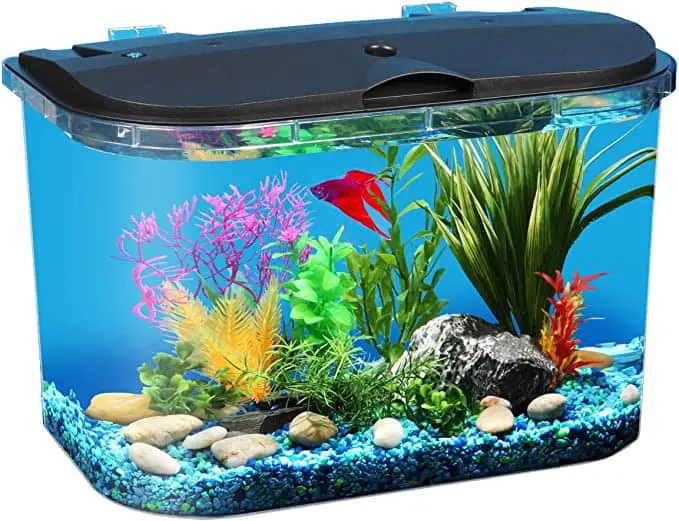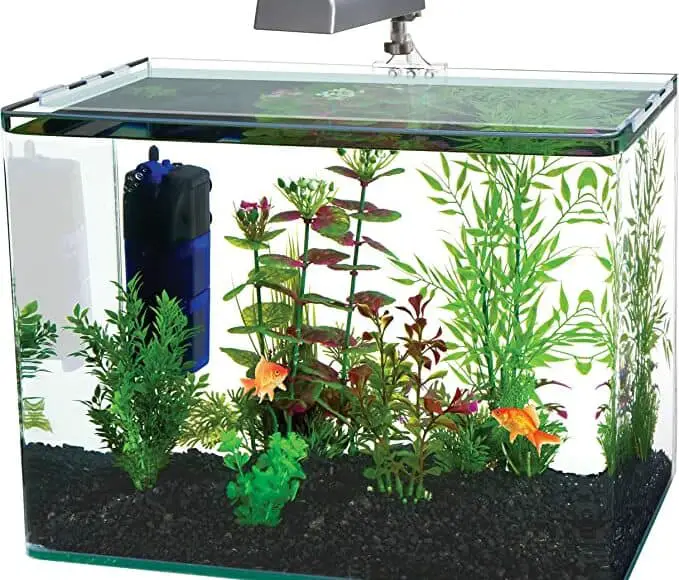Last Updated on February 14, 2023
Betta fish are popular options for pet owners. They’re affordable, colorful, and low maintenance compared to other fish.
Because of their small body, most people think they’re “dorm fish” and can survive in a small container or tank.
But did you know there is a minimum tank size to keep a healthy and happy betta fish?
So if you want to ensure that they’re living in an environment where they can thrive, this is the article for you!
We’ll answer common questions about betta tank size and give extra tips on choosing the right one for your aquarium pet.
Table of Contents
Key takeaways
- Regardless of their body size, you must provide at least a 5-gallon tank for your betta.
- A 1-gallon tank is unacceptable as it’s too small for your betta to move freely.
- The bigger the tank, the better. However, you should pick a wider and shallow tank instead of a tall and narrow one.
- Some things you need to consider when buying a tank are its size and shape, the location where you’ll put it, the material used, and the level of maintenance needed.
What’s the betta minimum tank size?
The average length of an adult betta fish is 7.5cm or 2.95 inches.
This roughly translates to 3 gallons if we follow the inch-per-gallon rule.
So how many gallons does a betta fish need?
According to most experts, a five-gallon tank is best for betta fish because it creates an environment that meets their needs.
Having a five-gallon tank means more room for them to explore and enhances water circulation and oxygenation, which are vital for their health and well-being.
Additionally, this size tank provides ample space for decorations such as plants or driftwood. And it’s suitable for a smaller place, like an apartment or condo.
Although a 5-gallon tank is big enough for one betta fish, it may not be ideal for some people.
First, it’s limited in terms of space and resources if you want to add other fish.
You’ll need a bigger tank to add tank mates like tetra, snails, or shrimps.
Second, small betta fish tanks require more regular maintenance than larger tanks.
To keep it clean and free from toxins, you’ll need to clean them once or twice a week.
One thing you need to consider, though, is the dimension of the 5-gallon tank. Because betta fish breathes through the surface, you’ll need a shallow and wider one.
So the ideal dimension of a 5-gallon betta fish tank is 14.5 (L) x 10 (W) x 13.5 (H) inches.
Is a 1-gallon tank enough for bettas?
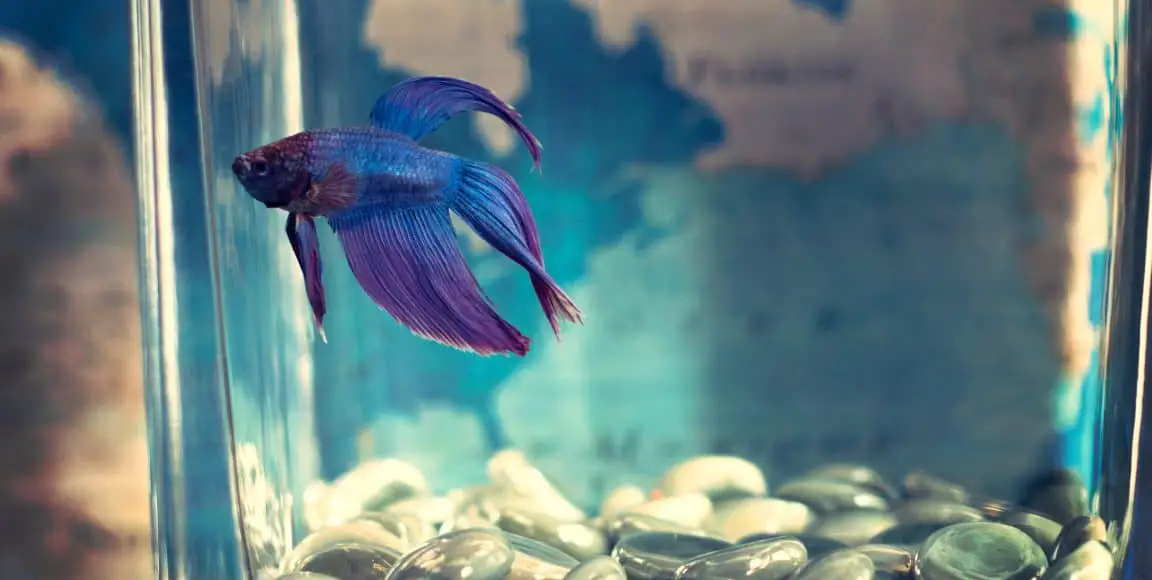
No. It will never be enough for a female or male betta fish.
You might have seen fish stores selling bettas in a tub and assumed that a 1-gallon tank is the bare minimum tank size. But it’s not.
This is a miserable situation as pet stores do this to conserve space and lessen operation expenses.
So, why don’t I recommend a 1-gallon tank size?
First, it’s challenging to maintain good water quality in a smaller tank, as the waste produced by the fish quickly increases, causing the water to become toxic.
If a betta lives in a 1-gallon container or less, then this would require a more frequent water change to keep ammonia levels as low as possible.
Second, you can’t put any equipment inside a 1-gallon tank. It’s impossible to put a good filtration system, which is necessary to maintain water quality and keep the tank clean.
Third, it’s insufficient water volume. Since a small tank can only hold a small amount of water, it won’t be easy to maintain and regulate the water temperature.
As we know, betta fish are ultra-sensitive to that.
Related: Do Betta Fish Need a Lid on Their Tank?
Can a betta fish live in a 2.5-gallon tank?
If this is your first betta tank, the 2.5-gallon tank size is decent. Your betta fish can move better than the 1-gallon tank. But it’s still not ideal.
A 2.5-gallon tank is considered a small tank, nonetheless. It needs a lot of work to maintain the temperature in this tank size.
Moreover, cleaning requires more effort as you need to do water changes more frequently.
It’s possible to add a filter, but you can only add a small one, which can help but only a little.
Your fish can survive up to 1-3 years in this tank with proper care. But opt for a larger tank if you want them to live longer and thrive.
If you’re temporarily using a 2.5-gallon betta fish tank size, then I don’t see any problems with that. Just make sure that you’ll transfer your betta to a bigger tank.
Is a 10-gallon tank too big for a betta?
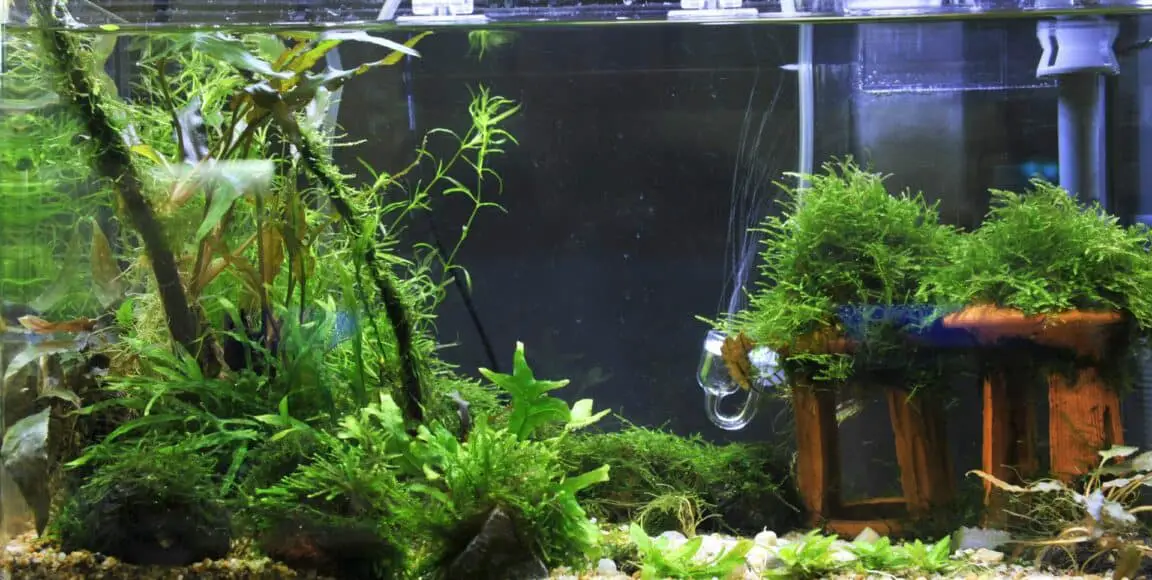
Not at all. If you can invest in a larger tank, I’d encourage you to go for 10 gallons instead of five.
10-gallon tanks are perfect for betta fish. It provides the ideal balance between space and better water conditions.
Moreover, it requires less maintenance than a smaller tank, so it’s an excellent choice for busy people who don’t have time to clean their aquariums constantly.
With its optimal size and easy upkeep, 10-gallon tanks are the perfect size to keep your betta happy.
But you need to get the correct dimension. Like 5-gallon tanks, you shouldn’t buy a deeper tank.
I suggest you go for this measurement: 17.75 (L) x 11.75 (W) x 12.63 (H) inches.
Why are larger tanks better than smaller tanks size?
At first glance, a small tank requires less work than a large tank. But that’s not the case.
I’ve been mentioning some benefits here and there above, but here’s a more structured list to prove that the bigger your tank is, the better:
By the look of it, it seems that a small tank requires less work than a larger tank. However, here are some reasons why a bigger aquarium is the best tank for your pet:
Bigger aquariums are more stable
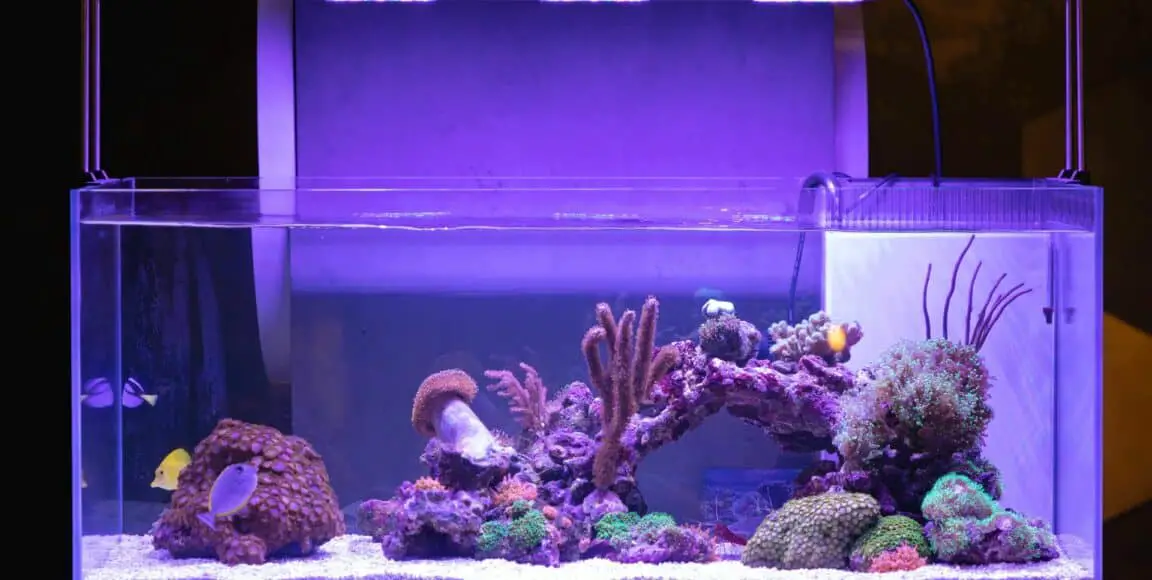
Larger tanks provide a more incredible amount of stability in different aspects.
It creates a more consistent temperature which can result in fewer environmental fluctuations.
A large tank gives aquatic life more room and space to thrive.
Because of this, it’s also easier to maintain other crucial parameters like pH, nitrite, and nitrates.
On the other hand, a smaller fish tank volume will be more difficult to maintain to keep water parameters stable.
It can result in poor water and increased ammonia, which can be deadly for your betta fish.
In smaller tanks, bacteria can grow more quickly and could become toxic to them, damaging their gills and internal organs.
Temperature won’t cause too much problem
Temperature fluctuations can put a great deal of stress on fish and other living organisms in your tank.
Many problems can arise when it changes too quickly or goes too far outside the recommended range. That includes poor health and death.
Since bettas are tropical fish, they need warm water temperatures. And if you’re living in cold areas or somewhere with different seasons, getting a small tank will be a bad idea.
It will be challenging to add a heater because it’s too small, and the temperature can rise or fall rapidly.
On the other hand, having a big tank will help you avoid this issue. It’s because the external temperature won’t affect it dramatically.
It will take more time for the temperature to change.
More room for other fish
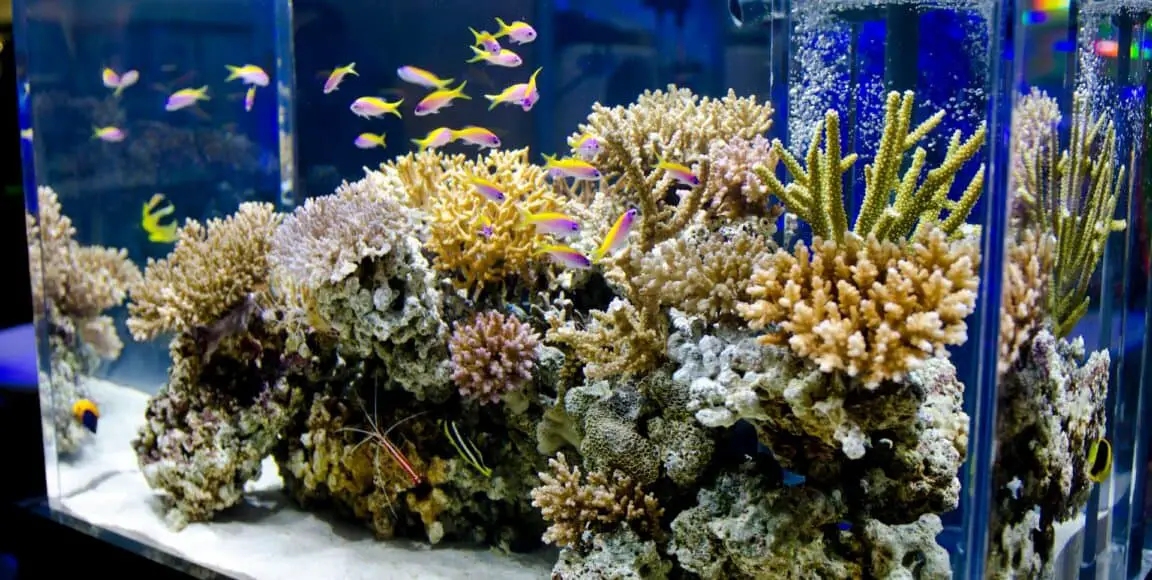
There are a few benefits of adding tank mates to a betta tank.
Bettas are known for their aggressiveness, and it’s more common to see them alone in a tank, especially male betta fish.
Tank mates can act as a distraction from any potential fin-nipping or aggression. But not every betta has patience, which can often lead to stress.
However, some owners want tanks with more fish, which won’t be possible in a small fish tank size.
If you’re one of them, you won’t need to worry about overcrowding a bigger tank.
For example, it’s easy to overstock a 5-gallon tank without realizing it.
However, this is fine in a larger aquarium as plenty of space is available.
You can add bettas, baby guppies, or goldfish that may need more room than their standard bowl provides!
It will take more time for the temperature to change.
More space for decorations and equipment
The larger size gives you more options for decorating your tank. You can add an array of substrates, plants, rocks, or even caves that your betta fish can explore.
You can also use the space to mimic their natural habitat, making them healthier and happier.
A larger tank also allows for adding more equipment and increasing the functionality of your tank.
With a bigger tank, you can house items such as heaters, filters, and lights necessary for providing betta fish with an optimal living environment.
For instance, you can add multiple filters, which can help kick-start the nitrogen cycle quicker and help maintain stable water parameters over time.
These essential items in the aquarium ensure your betta receives clean, oxygenated water and the correct temperature to ensure its physical and mental health.
Temperature won’t cause too much problem
Bettas need warm water temperature considering that they’re tropical fish. This won’t be an issue if you choose a big aquarium since external temperature affects a smaller fish tank a lot more and dramatically.
In big aquariums, it will take more time for the temperature to fluctuate that’s why it is also recommended that you include a heater in your betta fish tank.
Give your betta fish more room to swim around
A larger aquarium is the perfect home for betta fish, providing all the swimming room they need to stay healthy and happy.
Not only does having more swimming space provide a break from being stuck in a small bowl, but it’s also essential for keeping your betta active.
Being active encourages mental and physical health and helps with digestion and stress relief.
Plus, it’s just plain fun! As a betta owner, you’ll also enjoy seeing your betta swim around an extensive, beautiful tank than a small, narrow one.
How many bettas can live together?
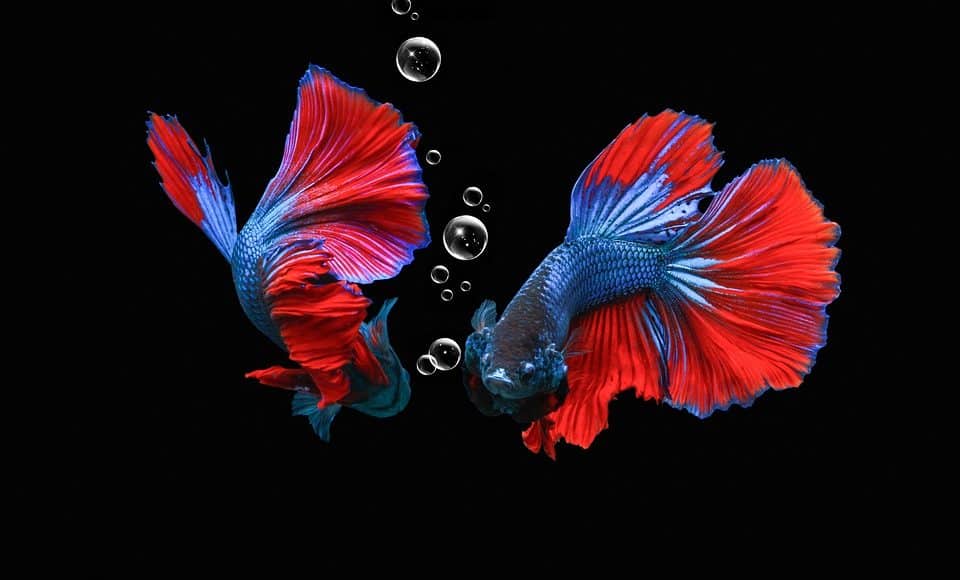
Bettas, especially males, are highly territorial and are fine living on their own. Never put males together because they may end up killing one through stress from constant territorial disputes.
On the other hand, females of around 4 to 5 in number can make up a betta sorority.
A lot of hobbyists go on the safe side of providing at least 3 to 5 gallons per betta.
For example, if you want four female betta fish in a sorority, having a 10-gallon to 20-gallon tank would be great. It will give them enough space to set up their territories.
Breeding is an entirely different situation. The male and female betta fish never occupy the same tank for a lengthy period.
I’m firmly against keeping female and male betta fish for an extended period. But if you want to, you’ll need a large tank for them to cohabitate.
Can bettas live with guppies?
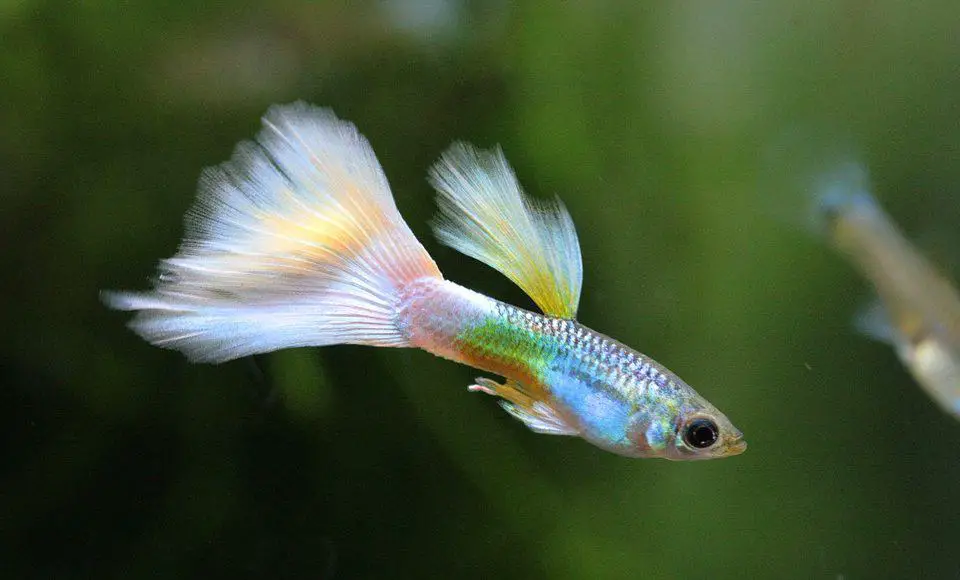
Male guppies have long, vibrant tails and fins, which may make a betta think it is another male betta.
It can make the betta fish very aggressive towards the male guppies. Some female guppies are also very colorful, and the betta may attack them.
Aside from this, betta fish loves to hunt! This may pose a danger to guppies in a betta fish’s hunting ground.
As much as possible, it is better to avoid such situations by not putting guppies with betta fish in small tanks.
But, if the aquarium is vast enough with plenty of plants to act as sight breaks, it is possible to have them as a community.
What may happen if the guppies stray into betta fish territory is still very unpredictable. This also depends on the temperament of your pet.
So if you’re planning to do this, observe your betta fish’s behavior first.
Things to consider when buying a tank
I always encourage those planning to own a betta fish to think carefully before buying a tank. This is to avoid purchasing the wrong one and wasting money.
So check out these things that you need to consider first before buying your betta’s tank:
Size and shape
These two will determine how conducive your betta’s environment will be.
Different-sized tanks can provide ample room for swimming and places for your betta to hide.
For instance, a 5-gallon tank is suitable if you only keep one betta. It provides enough room for it.
A 10-gallon tank is great for betta sorority or adding small tank mates like shrimps, tetras, or danios.
A 20-gallon tank is ideal for building an environment with multiple fish types or adding more decorations.
If you have a community tank, it is important to consider the 5 gallons for your little friend and add in the gallon requirements of all other tank mates.
However, putting a betta in a community tank is only advisable for a beginner if you have done thorough research on the compatibility and requirement of each community member.
Regarding shape, I’d recommend a broader and shorter tank. Betta fish are labyrinth fish, so they’ll need easy access to the surface to get some air.
I discouraged buying a tall and narrow tank as bettas will find it hard to swim vertically.
Each betta is unique, just like you! Some may be more friendly and passive than others. Always stay on the safe side and see their behavior to avoid unwanted scenarios.
Have a spare tank ready in case this attempt fails.
Space and location
The space and location where you’ll place your tank will significantly affect the health and well-being of your betta fish.
Before choosing the right tank size, ensure that there is enough room in your house or area to accommodate it.
Having a bigger betta tank is advisable if you’re living in a country with fluctuating climate. It will help you regulate temperature better. Also, betta fish prefer warmer temperatures, so finding a heated spot away from windows is ideal.
Lastly, check how accessible this location will be for regular maintenance tasks such as cleaning or refilling water levels.
I don’t know about you, but I tend to get lazy when something is too challenging. So ensure you’re near the water source, as this will make water change much easier and less time-consuming.
Accessories or equipment
Overcrowding is a common and often overlooked issue in a betta fish tank.
It can lead to stress and other harmful problems for your betta fish.
Besides the number of tank mates you want to add, you also need to consider the number of decorations, tools, and plants you’d like to add.
For instance, how much space will your filter system need? How about the heater? If you’re planning to make your tank as aesthetic as possible, how much will your decorations occupy?
You must also consider the thermometers, air pumps, and lighting systems.
Another way to view this is whether you want accessories included in the betta fish tank you’ll buy.
For instance, this 5-gallon tank includes LED lighting already, so you won’t need to buy one separately:
Some other tank sellers even include filtration systems. Here’s a good example:
So if you don’t want to get stressed out about choosing your lights or filters, these kinds of deals are perfect for you.
Material
Regarding materials, two of the most popular choices are glass and acrylic. Each has its pros and cons that you should consider before making a purchase.
Glass tanks are great because they are pretty durable, easy to clean, scratch-resistant, and affordable. It’s ideal for newbies and those planning to buy a smaller tank, i.e., 2.5 or 5 gallons.
The negative side of glass tanks is it tends to be heavier. If you buy a large tank made of glass, it will be more challenging to move or replace it in your house.
Meanwhile, acrylic tanks are usually lighter in weight than glass. And since it’s made of plastic, it’s easier for manufacturers to shape it to a different one rather than a square.
Acrylic tanks are more prone to scratches, but you can easily buff them. In addition, they are more impact-resistant and less fragile than glass tanks.
The biggest con of this tank, though, is its price. This is because it takes a lot of time to smoothen and mold a plastic fish tank.
Ultimately, choosing the suitable material for your betta fish tank will still be up to you.
Maintenance
A smaller betta fish tank size may be easier to clean, but it also requires more frequent cleaning as the water in these tanks can become contaminated faster.
This makes small tanks more high maintenance for busy people who can’t tend to their pet fish frequently.
On the other hand, a large tank needs fewer water changes.
It also provides more space to house beneficial bacteria, which can help keep the tank clean and promote a healthier environment.
Must-have for your betta tanks setup
Having the proper setup for your betta fish tank is essential for creating a comfortable and healthy environment for your fish.
Here are a few must-haves you should consider when setting up a new tank:
Heater
A heater can help keep your tank at a constant and comfortable temperature, ensuring that your betta fish remain healthy and active.
This is especially important if you live in a colder climate, as the water can quickly become too cold for the fish to survive.
Filter
Filters are essential for keeping your tank clean and free of harmful toxins and debris.
Smaller tanks may not be able to accommodate filters, so it’s important to keep this in mind when deciding on the size of your tank.
Types of filters include mechanical, chemical, and biological filtration systems.
Substrate
Substrate helps make the tank more aesthetically pleasing while providing a place for beneficial bacteria to grow, which helps keep the water clean and healthy.
Depending on the type of substrate chosen, it can also provide nutrition directly to the plants growing within the tank, which benefits fish health and longevity.
Plants
Plants give betta fish places to hide away from predators while also supplying oxygen into their environment through photosynthesis.
Furthermore, they can offer a sense of security, making them feel more at home in their new environment, which can reduce stress levels significantly!
Lighting system
Different lighting systems, such as LED or fluorescent, are available depending on how much light you want to provide for your betta’s habitat.
You also need to consider what plants you plan to add to the aquarium (if any).
Appropriate lighting will provide necessary nutrients to promote growth in plants while giving off enough light so that both must see their surroundings clearly without straining their eyesight!
Decorations
Adding decorations such as rocks or driftwood provides places where beneficial bacteria can thrive.
They help maintain suitable water quality levels for your betta’s health and make its home look visually appealing!
These decorations can also provide entertainment by allowing your betta fish to explore different surfaces and swim around obstacles. It is excellent for stimulating physical activity within its environment!
Related: How to Decorate Fish Tank
Conclusion
Now that you know the most suitable betta fish tank size, it’s time to buy one for your pet fish.
Purchasing a 5-gallon tank is the ideal choice. But having a 10-gallon or 20-gallon tank is much better. That’s because the bigger your tank, the more things you can add and the more space your betta can explore.
It will promote a healthy life in your tank and give you with an active fish.
You might need to spend more and invest in better equipment to keep your betta happy, but it will all be worth it!

